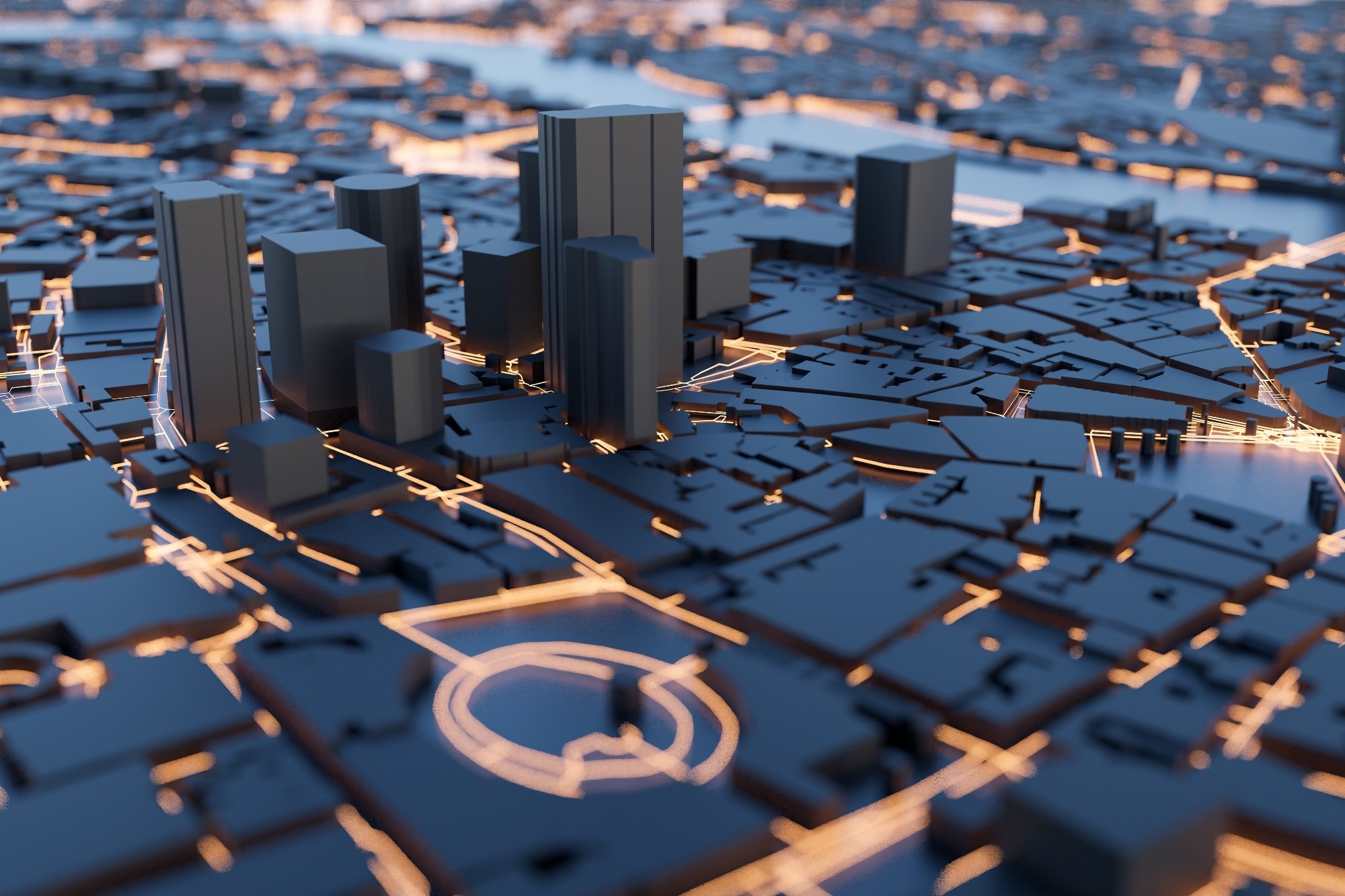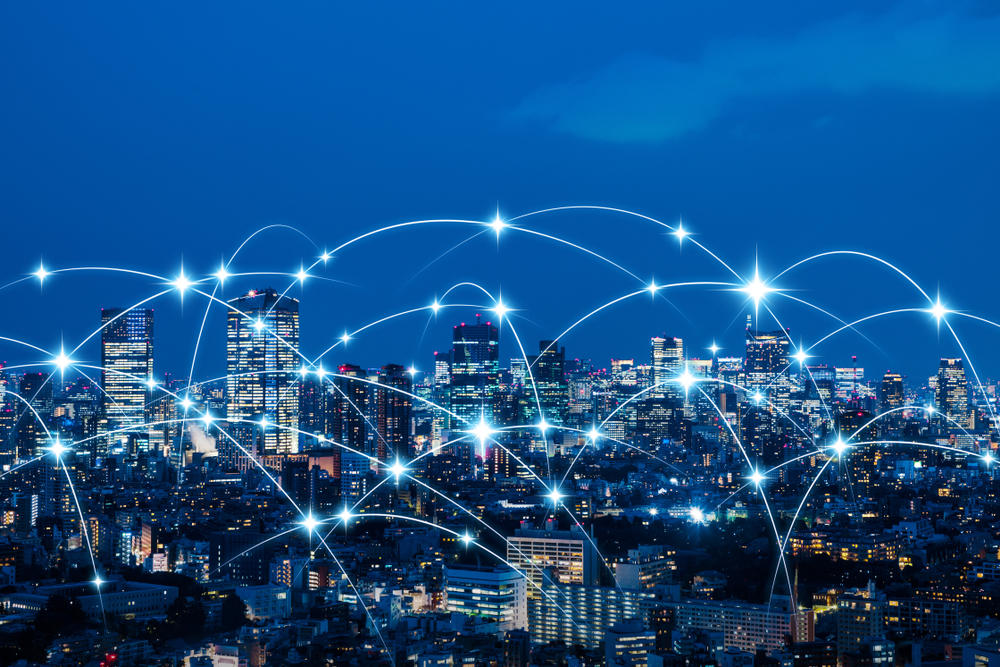The nature of cities is undergoing a profound transformation in the 21st century as the changing needs of urban populations and the challenges of the modern world present new challenges and possibilities.

Image Credit: Jamo Images/Shutterstock.com
Innovative technologies such as IoT and AI are becoming increasingly essential to the design and development of the smart city concept, connecting all levels and elements. This article will provide an overview of the key role of these technologies in this new frontier.
What are Smart Cities?
A smart city is defined as a population center that employs an array of digital technologies to enrich the lives of its residents. This is vastly different from conventional theories of what a city should be. Smart cities have been widely touted as the cities of the future by multiple governmental and industry thought leaders.
By 2050, according to the UN, around 70% of the world’s population will reside in urban areas, placing enormous pressure on urban planners in terms of environmental, economic, and social impacts. This will require new ways of thinking to ensure the continued comfort of residents and the sustainability of cities.
Monitoring critical issues like air quality, building systems, energy, and transportation require massive amounts of data to be analyzed in real time, which currently is not possible with conventional city planning. The idea of the smart city, where connectivity is central, changes this and improves residents’ quality of life.
Smart cities provide several solutions, such as reducing waste and pollution, connecting and protecting businesses and residents, improving public transportation, micromobility, reducing road congestion, managing resources, streamlining governance, and providing insights by collecting and analyzing open data.
By utilizing technology, a comprehensive view of all city services, operations, and infrastructure can be achieved. Analysis of multiple real-time data points helps city officials plan for any potential issues and improve outcomes, elevating the experiences of residents, businesses, and visitors.
The Role of IoT and Connectivity in Smart Cities
Connectivity, as stated previously, is key to the success of a smart city. The ability to monitor every service and aspect of a city, analyze real-time data, collect multiple data points in central hubs, and use this data to predict outcomes and implement changes provides city planners and officials with enhanced decision-making abilities.
Smart cities utilize innovative technologies including IoT, AI, cloud computing, and blockchain to provide comprehensive solutions to the environmental, social, and economic issues faced by modern urban planners. To date, these technologies have been employed in a limited manner, making certain aspects “smart.”
Lighting, meters, utilities, and traffic control systems have already seen some integration of smart technologies. Currently, cities across the globe are prioritizing mass connectivity to improve these urban elements and many others and pave the way for the introduction of fully “smart” population centers.

Image Credit: metamorworks/Shutterstock.com
The IoT improves mass data collection, analysis, and solution deployment by connecting devices and infrastructure, be they utilities, transportation, personal communication devices, sensors, cameras, and even wearables.
Central to the optimal operation of IoT technologies are protocols, which facilitate the transfer of data between different devices and components at all levels through data centers or the cloud. Protocol stack levels include the physical and sensory layer, network layer, data processing layer, and application layer.
Current Challenges
Several challenges exist with the deployment of connectivity in smart cities and the overall smart city concept. For instance, the cost of IoT deployment has until now been largely prohibitive for urban planners, which has limited its use in cities.
Smart city planning is a delicate balancing act, requiring the cooperation of government, private sector, public organizations, and civilians. Budgetary considerations do not always allow for the implementation of technologies that could improve residents’ quality of life and all the benefits a smart city would bring.
Not all data is created equal, either. To be truly effective, smart city systems must be able to prioritize the most useful or crucial data to improve the real-time delivery of mission-critical services. Automation is key, as without it, connectivity is largely useless. This requires significant investment in new and innovative technologies.
Intelligent infrastructure must be designed which can cope with necessary scaling, handle data efficiently, and support accurate analytical tools. By doing this, infrastructure such as traffic management systems, smart energy grids, and air quality monitoring systems can react both rapidly and responsibly.
One example of an integrated, highly connected emerging technology which has a place in smart cities is facial recognition. Large amounts of video footage and specific markers must be stored, processed, and acted upon by automated systems, presenting technological challenges and possible ethical issues.
Perhaps one of the most critical challenges associated with smart cities is data security. With huge amounts of data being stored and processed, robust systems must be implemented which protect private user data and utilities from bad actors, hacking attempts, and data theft.
The Future
In order to realize the smart city concept, several complex and dynamic challenges must be addressed by stakeholders at all levels of urban planning and everyday usage. Socioeconomic and environmental issues are becoming increasingly apparent as the world’s urban population continues to grow exponentially.
Central to the future of smart cities is connectivity, but whilst IoT, AI, and other innovative technologies provide several benefits for urban planners of the future by connecting people and cities and providing real-time solutions, there must be a recognition of the potential drawbacks of deploying these at scale.
With cities such as Seoul, New York, and London leading the way, the smart city is becoming a reality, with Industry 4.0 technologies an intimate component of the future of urban living, providing enhanced quality of life for residents and visitors alike and improved commercial opportunities.
More from AZoBuild - Green Building: Where Are We Now?
References and Further Reading
Particle Industries (2023) IoT and the Smart City: Examples, Applications, and Goals [online] particle.io. Available at:
https://www.particle.io/iot-guides-and-resources/smart-cities-iot/
World Economic Forum (2021) What is a ‘smart city’? [online] weforum.org. Available at:
https://www.weforum.org/agenda/2021/08/what-is-a-smart-city/
Microsoft (2023) Smart cities: The cities of the future [online] Microsoft.com. Available at:
https://www.microsoft.com/en-us/industry/government/resources/smart-cities
Beevor, M (2018) 6 Challenges Smart Cities Face and How to Overcome Them [online] statetechmagazine.com. Available at:
https://statetechmagazine.com/article/2018/12/6-challenges-smart-cities-face-and-how-overcome-the
Disclaimer: The views expressed here are those of the author expressed in their private capacity and do not necessarily represent the views of AZoM.com Limited T/A AZoNetwork the owner and operator of this website. This disclaimer forms part of the Terms and conditions of use of this website.